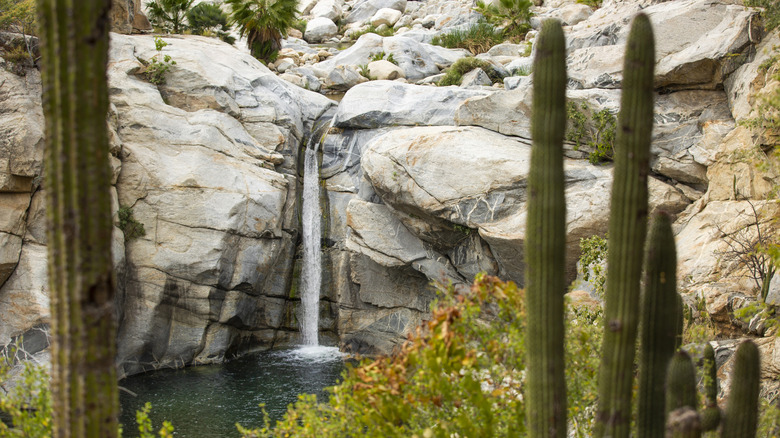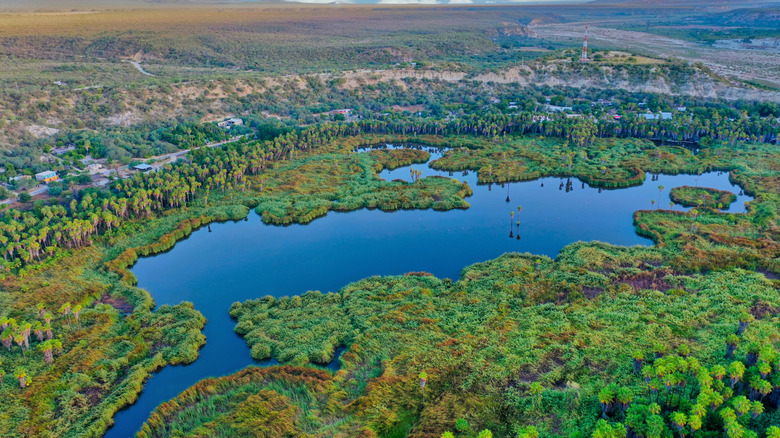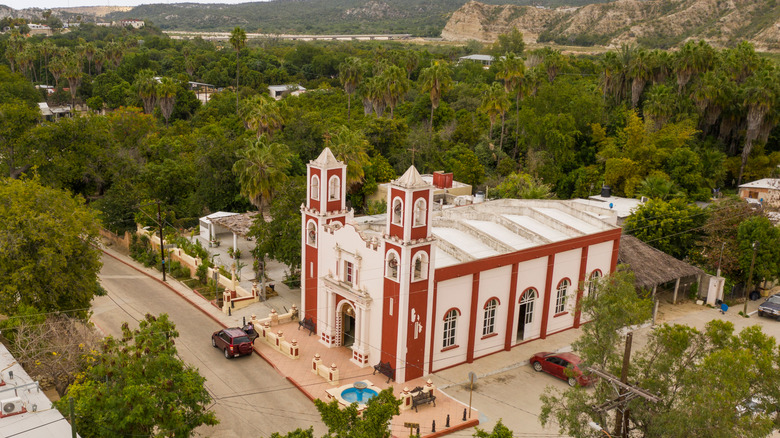Hidden In The Hills Of Baja Is A Serene Oasis With Hot Springs, A Waterfall, And A Charming Town Square
Nested in the hilly hinterland of Baja California Sur, the spring-fed town of Santiago is worth the detour from the mesmerizing coastline that makes the region a favorite with tourists from the States. A serene oasis far away from the crowded beaches of Los Cabos, this picturesque Mexican pueblo is the dream destination for lovers of both nature-filled relaxation and active travel alike. Its wealth of bodies of water, from springs to waterfalls, offer a respite from the humid, tropical weather of the region. In fact, it doesn't get any more tropical than Santiago, as this lush area sits directly on the Tropic of Cancer. Located only 4.3 miles from Santiago's quaint town center, a sweeping, bright copper monument marks this area of geographical and climate interest, and is open to visitors.
If you are landing in Los Cabos International Airport, a 42-minute drive on the Mexican Federal Highway 1 (Carretera Transpeninsular) will deliver you directly to Santiago's doorstep. Alternatively, you can head out of Cabo San Lucas, the resorts-rich, foodie capital of the region, and enjoy a scenic drive (under an hour and a half), through the beautiful Baja hills to your destination.
Santiago is home to natural springs and a mesmerizing waterfall
Water rushes and rumbles in Santiago in two main ways: from hot natural springs dotting the region, and from cascading waterfalls enlivening the desertic Baja hills. Santiago is the best place to reach three of the main thermal pools, making this area unique. The hot springs of Santa Rita are the closest, only 6.6 miles (or a 20-minute drive away) from the town. In this paradisiac spot, sheltered by the Sierra de La Laguna mountain range, natural pools of all sizes await for the price of about $12 (250 MXN). Soak in the bubbling pools to melt away your stress, hydrate your skin, and improve circulation. Celebrated for their numerous health benefits, hot springs like Santa Rita have been preserved by indigenous populations throughout the centuries.
Once you are feeling reinvigorated by the steaming springs, head to the breathtaking Cañón de la Zorra waterfall, steeped in the UNESCO heritage site of Sierra de La Laguna. This 33-foot-tall waterfall is located inside the Cañón de la Zorra, a canyon naturally carved within smooth boulders and rife with local vegetation. Once you have reached this magical spot, you can sunbathe on the smooth rocks or swim at your leisure. To access the Cañón de la Zorra, you will need to head to the Sol de Mayo ranch, the ecological refuge preserving the surrounding area and open year-round from 9 a.m. to 6 p.m..
You will soon find that the oasis surrounding Santiago is not ideal just for secluded waterfalls and bubbling pools, but for nature-filled activities, too. Those include diving, hiking, kayaking, UTV driving, and mountaineering with stunning views of the Sierra.
Visit Santiago's charming town square and get active in nature
Santiago may be best known for its wealth of natural beauties, but its postcard-perfect town center is without any doubt deserving of a stop. The aptly named Plaza Santiago is the heart of the town, where the red-and-white Casa de la Cultura de Santiago is the first thing you see. This is the local hub for the state-wide cultural promotion institute, and it is home to a wide range of events including live music and art exhibitions. It is worth checking the website in advance to make the most of their cultural programs during your visit. A 10-minute walk down the palm-shaded boulevard Calzador Maestros Misioneros will take you to Santiago's main church, known as Misión. Its full name, Sitio de la Misión de Santiago de Añini, refers to Santiago being one of the first colonial missions in the area. In fact, this sacred place dates back to 1724, when Jesuit missionary Ignacio Maria Napoli first made the mark on the region. The appellation "Añini" refers to the original name given to the land by the indigenous Pericúes people, who led fierce rebellions until being expelled from their native Baja in 1767.
The Baja region is filled with natural treasures and stunning beaches, and while it's possible to swap the crowds of Cabo San Lucas for quieter beach towns, venturing further can unlock new unforgettable experiences such as this history-filled secret town surrounded by the desert.


